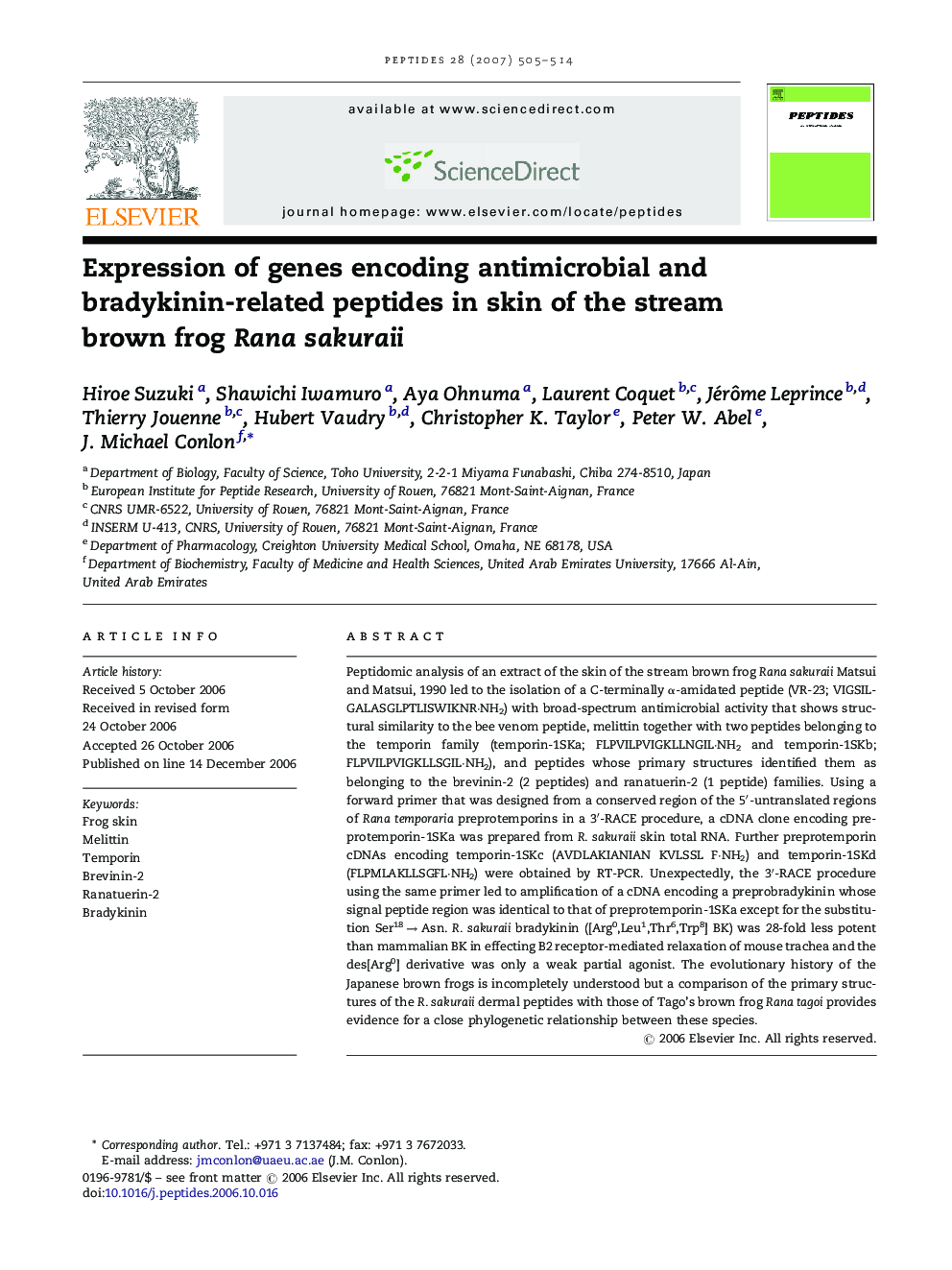| کد مقاله | کد نشریه | سال انتشار | مقاله انگلیسی | نسخه تمام متن |
|---|---|---|---|---|
| 2008133 | 1066398 | 2007 | 10 صفحه PDF | دانلود رایگان |

Peptidomic analysis of an extract of the skin of the stream brown frog Rana sakuraii Matsui and Matsui, 1990 led to the isolation of a C-terminally α-amidated peptide (VR-23; VIGSILGALASGLPTLISWIKNR·NH2) with broad-spectrum antimicrobial activity that shows structural similarity to the bee venom peptide, melittin together with two peptides belonging to the temporin family (temporin-1SKa; FLPVILPVIGKLLNGIL·NH2 and temporin-1SKb; FLPVILPVIGKLLSGIL·NH2), and peptides whose primary structures identified them as belonging to the brevinin-2 (2 peptides) and ranatuerin-2 (1 peptide) families. Using a forward primer that was designed from a conserved region of the 5′-untranslated regions of Rana temporaria preprotemporins in a 3′-RACE procedure, a cDNA clone encoding preprotemporin-1SKa was prepared from R. sakuraii skin total RNA. Further preprotemporin cDNAs encoding temporin-1SKc (AVDLAKIANIAN KVLSSL F·NH2) and temporin-1SKd (FLPMLAKLLSGFL·NH2) were obtained by RT-PCR. Unexpectedly, the 3′-RACE procedure using the same primer led to amplification of a cDNA encoding a preprobradykinin whose signal peptide region was identical to that of preprotemporin-1SKa except for the substitution Ser18 → Asn. R. sakuraii bradykinin ([Arg0,Leu1,Thr6,Trp8] BK) was 28-fold less potent than mammalian BK in effecting B2 receptor-mediated relaxation of mouse trachea and the des[Arg0] derivative was only a weak partial agonist. The evolutionary history of the Japanese brown frogs is incompletely understood but a comparison of the primary structures of the R. sakuraii dermal peptides with those of Tago's brown frog Rana tagoi provides evidence for a close phylogenetic relationship between these species.
Journal: Peptides - Volume 28, Issue 3, March 2007, Pages 505–514